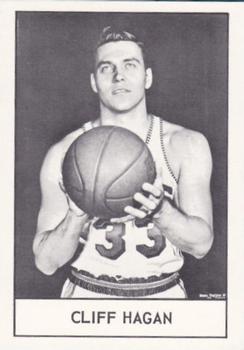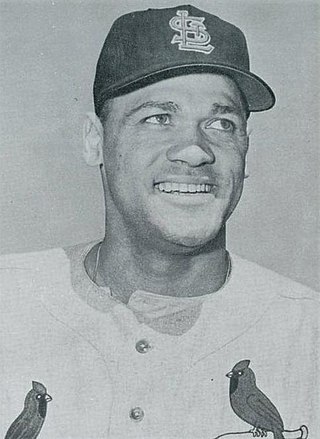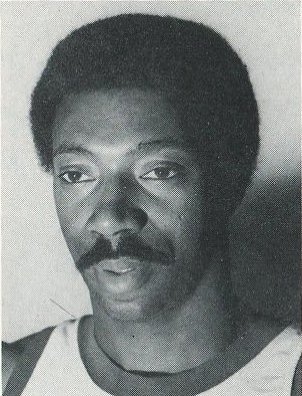The 1970 NBA draft was the 24th annual draft of the National Basketball Association (NBA). The draft was held on March 23, 1970, before the 1970–71 season. In this draft, 17 NBA teams took turns selecting amateur U.S. college basketball players and other eligible players, including international players. A player who had finished his four-year college eligibility was eligible for selection. If a player left college early, he would not be eligible for selection until his college class graduated. The first two picks in the draft belonged to the teams that finished last in each division, with the order determined by a coin flip. The Detroit Pistons won the coin flip and were awarded the first overall pick, while the San Diego Rockets were awarded the second pick. The remaining first-round picks and the subsequent rounds were assigned to teams in reverse order of their win–loss record in the previous season. Three expansion franchises, the Buffalo Braves, the Cleveland Cavaliers and the Portland Trail Blazers, took part in the NBA Draft for the first time and were assigned the seventh, the eighth and the ninth pick in each round. In the first round, the Cavaliers had the seventh pick, while the Blazers and the Braves had the eighth and the ninth pick respectively. In the subsequent rounds, the Cavaliers and the Braves exchanged their order of selection, while the Blazers had the eighth pick throughout the draft. The draft consisted of 19 rounds comprising the selection of 239 players; it holds the record for the most prospects selected in any NBA draft.

Melvin Joe Daniels was an American professional basketball player. He played in the American Basketball Association (ABA) for the Minnesota Muskies, Indiana Pacers, and Memphis Sounds, and in the National Basketball Association for the New York Nets. Daniels was a two-time ABA Most Valuable Player, three-time ABA Champion and a seven-time ABA All-Star. Daniels was the All-time ABA rebounding leader, and in 1997 was named a unanimous selection to the ABA All-Time Team. Daniels was enshrined into the Naismith Memorial Basketball Hall of Fame in 2012.

Clifford Oldham Hagan is an American former professional basketball player. A 6′ 4″ forward who excelled with the hook shot, Hagan, nicknamed "Li’l Abner", played his entire 10-year NBA career (1956–1966) with the St. Louis Hawks. He was also a player-coach for the Dallas Chaparrals in the first two-plus years of the American Basketball Association's existence (1967–1970). Hagan is a five-time NBA All-Star and an ABA All-Star. He won an NCAA basketball championship in 1951 as a member of the Kentucky Wildcats, and he won an NBA championship with the Hawks in 1958.

Louis Dampier is an American retired professional basketball player.
Robert M. Hopkins was an American basketball player and coach.

Frederick L. Lewis is a retired American basketball player. He played professionally in the National Basketball Association (NBA) and American Basketball Association (ABA). He is the only player to start his career in the NBA, and play all 9 full ABA seasons (1967-1976) until the NBA/ABA merger, then sign back with the NBA.

Robert Netolicky is a retired American basketball player. A 6'9" power forward/center, he played professionally in the now–defunct American Basketball Association (ABA) from 1967 to 1976. Netolicky was a four–time ABA All–Star and two–time ABA Champion.
The 1972 NBA draft was the 26th annual draft of the National Basketball Association (NBA). The draft was held on April 10 and 15, 1972 before the 1972–73 season. In this draft, 17 NBA teams took turns selecting amateur U.S. college basketball players and other eligible players, including international players. The first two picks in the draft belonged to the teams that finished last in each conference, with the order determined by a coin flip. The Portland Trail Blazers won the coin flip and were awarded the first overall pick, while the Buffalo Braves were awarded the second pick. The remaining first-round picks and the subsequent rounds were assigned to teams in reverse order of their win–loss record in the previous season. As a result of last year's supplemental hardship draft, the Cincinnati Royals, the Atlanta Hawks, the Golden State Warriors and the Baltimore Bullets forfeited their first-round picks, while the Los Angeles Lakers forfeited their fourth round pick. Prior to the start of the season, the Cincinnati Royals relocated and became the Kansas City-Omaha Kings. The draft consisted of 18 rounds comprising the selection of 198 players.
The 1971 NBA draft was the 25th annual draft of the National Basketball Association (NBA). The draft was held on March 29 and 30, 1971, before the 1971–72 season. In this draft, 17 NBA teams took turns selecting amateur U.S. college basketball players and other eligible players, including international players. A player who had finished his four-year college eligibility was eligible for selection. If a player left college early, he would not be eligible for selection until his college class graduated. The first two picks in the draft belonged to the teams that finished last in each conference, with the order determined by a coin flip. The Cleveland Cavaliers won the coin flip and were awarded the first overall pick, while the Portland Trail Blazers were awarded the second pick. The remaining first-round picks and the subsequent rounds were assigned to teams in reverse order of their win–loss record in the previous season. Prior to the start of the season, the San Diego Rockets and the San Francisco Warriors relocated to Houston, Texas, and Oakland, California, and became the Houston Rockets and Golden State Warriors respectively. The draft consisted of 19 rounds comprising the selection of 237 players. The league also hosted a supplemental hardship draft on September 20, 1971, for college underclassmen who wished to join the league.
Daniel Michael McGinn was an American professional baseball player. A left-handed pitcher, McGinn played in Major League Baseball for the Cincinnati Reds, Montreal Expos and Chicago Cubs from 1968 to 1972.

Richard James Ricketts, Jr. was an American professional basketball and baseball player. Ricketts was the No. 1 overall pick of the 1955 NBA draft by the St. Louis Hawks out of Duquesne University. Ricketts played professional basketball and baseball simultaneously and retired from basketball to play baseball. He pitched for the St. Louis Cardinals in 1959 and had a 10-season pitching career. He is one of 13 athletes to play in both the NBA and MLB.

Thomas Porter Thacker is an American former basketball player. He played in the National Basketball Association (NBA) for the Cincinnati Royals and the Boston Celtics from 1963 to 1968, and from 1968 to 1971, for the American Basketball Association's Indiana Pacers. He is the only player to have played on an NCAA championship team, an ABA championship team, and an NBA championship team.

Charles Francis "Cotton" Nash was an American professional basketball and baseball player. He played as a forward in the National Basketball Association (NBA) for the Los Angeles Lakers and San Francisco Warriors, and in the American Basketball Association (ABA) for the Kentucky Colonels. He was an outfielder in Major League Baseball (MLB) for the Chicago White Sox and Minnesota Twins.

Eugene Wilbert Moore is an American former professional basketball player from St. Louis, Missouri. He played college basketball for Saint Louis.

Lawrence T. Cannon was an American basketball player. Born and raised in Philadelphia, Cannon was selected in the first round of the 1969 NBA draft by the Chicago Bulls with the fifth overall pick. Cannon was an American Basketball Association All-Star, who averaged 16.6 points per game in his ABA/NBA career after his All-American career at La Salle University. Cannon was forced to retire from basketball due to a chronic medical condition, phlebitis in his legs. Cannon died on May 29, 2024, at the age of 77.
Bob Christian is a retired American basketball player.
Robert L. Quick is an American former National Basketball Association (NBA) and American Basketball Association (ABA) player.
Clyde Wayne Mashore was an American Major League Baseball outfielder who played in 241 games over five seasons for the Cincinnati Reds and Montreal Expos of the National League. He batted and threw right-handed.
Craig Douglas Caskey is a former Major League Baseball pitcher. Caskey played for the Montreal Expos in 1973.
Luther Rackley Jr. was an American professional basketball player who played six seasons in the National Basketball Association (NBA), and the American Basketball Association (ABA).









